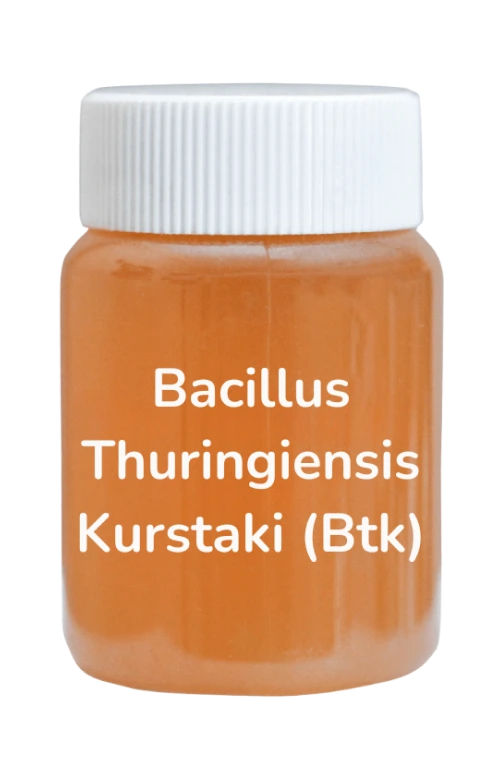


Bio Pesticide Liquid
Bacillus thuringiensis kurstaki (BTK)
 Share On Whatsapp
Share On Whatsapp

Bacillus thuringiensis kurstaki (Btk) is a strain of Bacillus thuringiensis specifically designed to control caterpillars in agriculture and gardens. It produces crystal proteins (Cry proteins) that are toxic to caterpillars. Once consumed, these proteins paralyze the caterpillar's digestive system, halting feeding and causing eventual death due to starvation.


